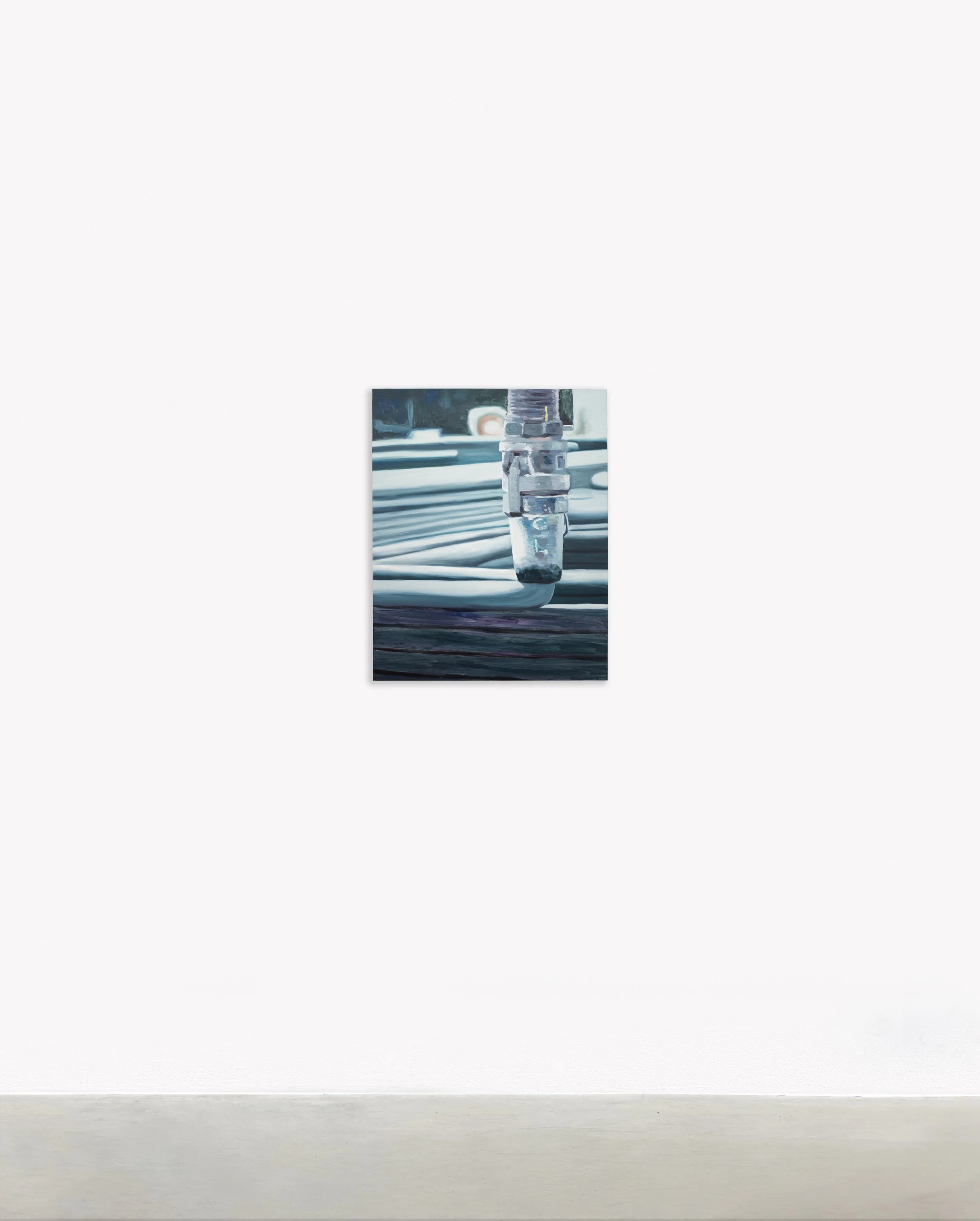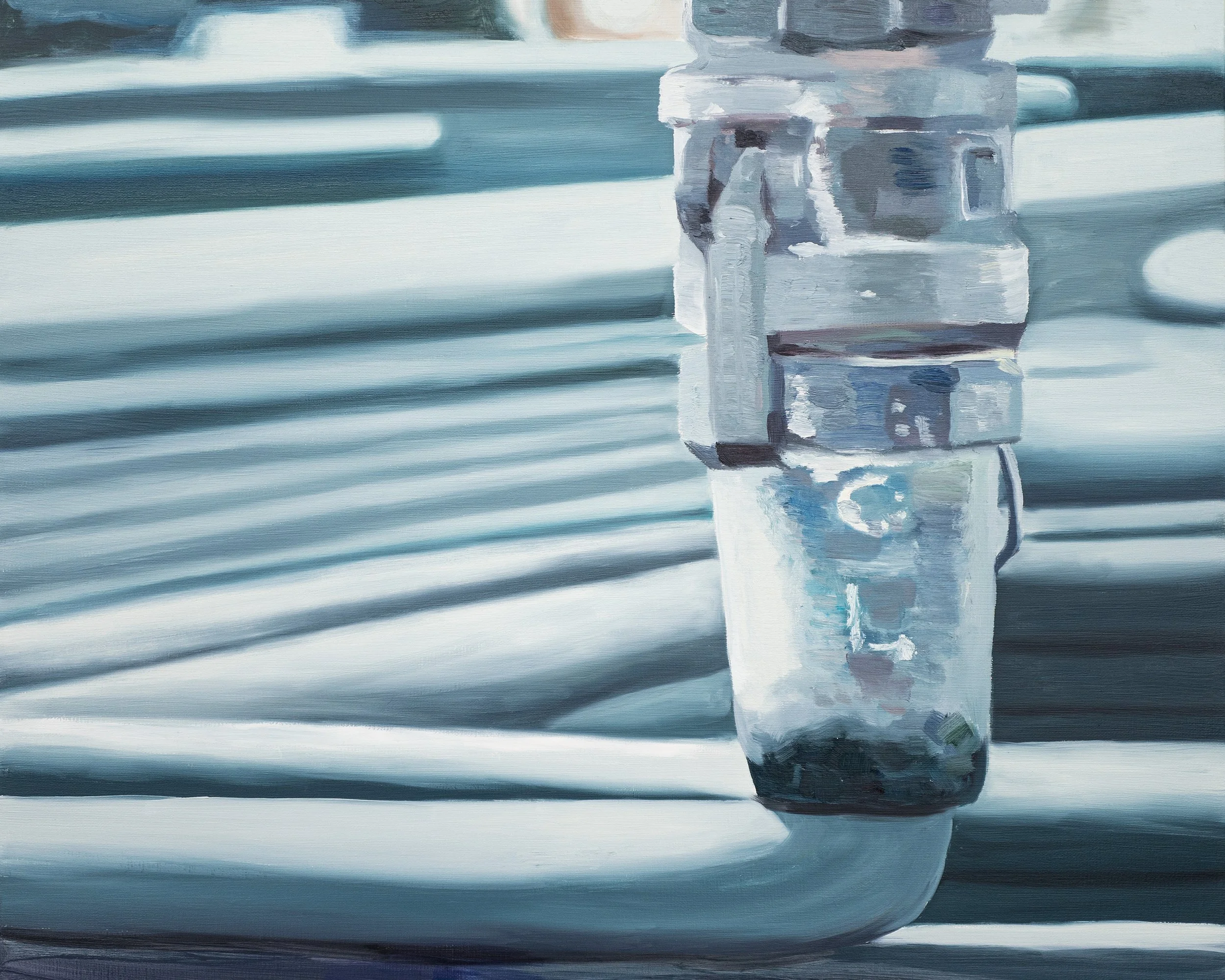3D-Printing House, 2022
3D-Printing House, 2022
Oil on linen
76 x 61 cm (30 x 24 in)
Technology is constantly evolving, shaping the future of humanity and redefining the way houses can be built. 3D printing has emerged as a potential solution to the global housing shortage and rising property costs. This technology enables the design of structures tailored to specific needs in a cost-effective manner, reducing material and resource consumption while addressing environmental concerns. Depicting the intricate process of a 3D printer at work, 3D-Printing House(2022) poses a thought-provoking question: Is 3D printing the future of the construction industry? Already, 3D-printed houses are transforming the field by making construction faster, more affordable, and increasingly sustainable. In less than 24 hours, a 3D printer can complete the foundation and walls of a small home at a fraction of the usual cost. Through its visual representation of this technological shift, 3D-Printing House captures the evolving landscape of construction while prompting reflection on humanity’s impact on the environment.
Q: Could you share the background and inspiration behind 3D-Printing House(2022)?
Tan Mu: This work stems from my long-standing interest in 3D printing technology. When I was in university, our school had a ceramics department, and 3D printing was initially introduced in the fields of sculpture and ceramics. At the time, I saw many studios using 3D printing to create ceramic pieces, even firing them in kilns after printing. Later, the technology expanded into architecture. In 2015, a Chinese company pioneered the use of robotic arms and a cement-like composite material to print buildings, initially producing small pavilions and houses. This innovation later gained traction in the Middle East, where regulatory policies were more accommodating, allowing for rapid construction of functional structures.
I reached out to this company to inquire about some technical details. They mentioned that while the technology offers advantages in cost and speed, it also faces resistance from the traditional construction industry. Nevertheless, 3D-printed buildings, particularly in terms of earthquake resistance, have been widely recognized for their durability. Since 2015, I have been closely following the application of 3D printing in various fields, particularly in architecture. In recent years, the technology has matured, even being used to build affordable housing communities not only in the U.S. but also in other parts of the world. Additionally, some companies are exploring its potential for extraterrestrial settlement, such as constructing habitats on Mars. While this might sound like a futuristic concept, if humanity ever needs to build on Mars, 3D printing would undoubtedly be a key technology.
Q: What specific scene does your work depict?
Tan Mu: This piece captures a moment from a demonstration video of a company designing 3D-printed housing for future Mars missions. The scene portrays a machine printing a house using concrete and specially formulated composite materials. I chose to document this moment because I see it as a pivotal point in technological evolution. 3D printing is not just transforming the construction industry—it has the potential to completely redefine how we build our living spaces in the future.
Q: Why did you choose to focus on the 3D printing nozzle?
Tan Mu: The nozzle is the core component of 3D printing technology—it represents the starting point of creation and innovation. In the future, as this technology becomes widespread, 3D printers may become as common as household appliances, potentially replacing traditional methods of construction and manufacturing. But at this early stage, I believe it deserves special attention and documentation. By focusing on the nozzle, I aim to capture this crucial moment of technological transformation and offer a point of reflection for future audiences. I see this work as a “portrait of technology”—not only recording a fleeting moment in the advancement of 3D printing but also symbolizing the dawn of a technological revolution. Just as portraiture captures the essence and individuality of a person, this piece captures the essence of 3D printing technology through its most critical element: the nozzle. When a new technology first emerges, it holds the most radical potential, and that is precisely when it deserves to be observed and recorded. Through this work, I hope to provide both present and future viewers with a lens through which to contemplate the trajectory of technological progress.



